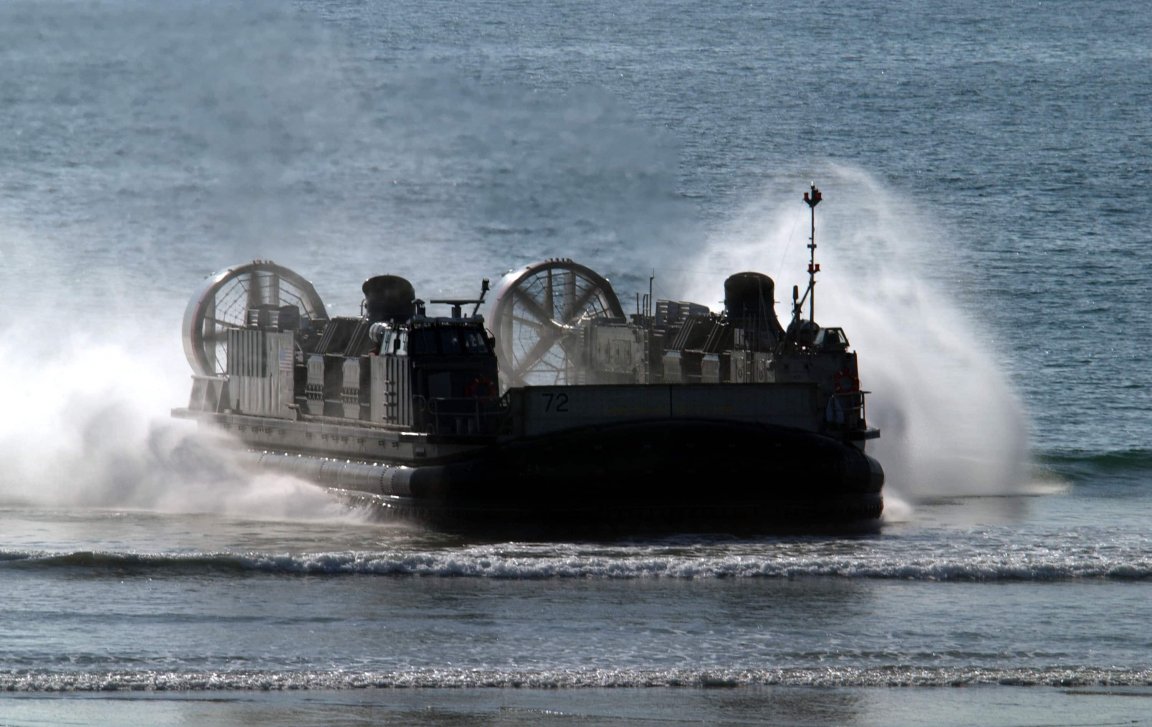
Old but Gold
People still consider hovercraft to be within the realm of “futuristic” vehicles, but the U.S. military has been testing out hovercraft since Vietnam. For the U.S. Marines, hovercraft are an essential class of vehicle because they allow easy transport from ship to shore. That’s why one of the most important vehicles in the Marine arsenal is the Landing Craft Air Cushion (LCAC), which is also the go-to landing craft for the U.S. Navy.
The LCAC is about 28 meters (91 feet) long and has a beam of about 15 meters (48 feet). It is a monster lifter, capable of carrying 60-75 tons of equipment, whether it be troops, materials, or an Abrams battle tank. Fully loaded, the hovercraft weighs about 176 tons. Even at that full load, it can reach speeds of about 40 knots or 74 kph (46+ mph), powered by four ETF-40B gas turbines.

In With the New
As you would expect, these babies are mainly used as transporters. The long range of 482 kilometers (300 miles) at 35 knots (40.2 mph) with full payload allows the military to operate “over the horizon” missions better, including everything from humanitarian assistance and disaster relief to a full-blown military invasion.
Since they are a type of hovercraft, LCACs can fly over mines laid out over seas and beaches, as well as any underwater obstacles like coral. Their air cushion technology gives the LCAC access to more than 70 percent of coastlines, a huge step up from the 15 percent conventional landing craft can access.
However, these aging beasts are nearing retirement. The Navy has initiated a Service Life Extension Program for them, just so they would last until the arrival of the new Ship-To-Shore-Connector (SCS). Those are basically tricked-out LCACs, improving on the current hovercraft’s design and technology limitations and providing for a more reliable vehicle for future missions. The first SCSs are expected for delivery next year, but they won’t be in operation until 2020, so the LCAC still has more than a few missions to complete before it sails off into the sunset.